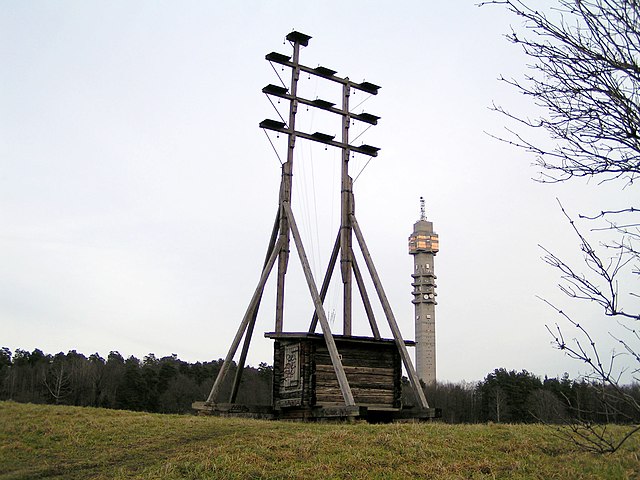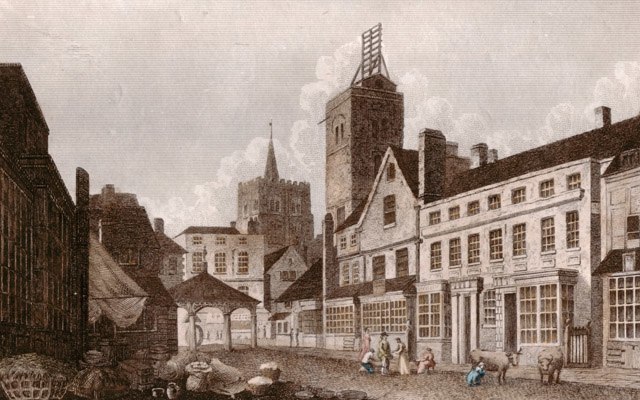Claude Chappe was a French inventor who in 1792 demonstrated a practical semaphore system that eventually spanned all of France. His system consisted of a series of towers, each within line of sight of others, each supporting a wooden mast with two crossarms on pivots that could be placed in various positions. The operator in a tower moved the arms to a sequence of positions, spelling out text messages in semaphore code. The operator in the next tower read the message through a telescope, then passed it on to the next tower. This was the first practical telecommunications system of the industrial age, and was used until the 1850s when electric telegraph systems replaced it.
Claude Chappe
One example of a Chappe telegraph tower, in Narbonne, in the south of France.
Chappe's telegraph
Statue de Chappe à Paris
An optical telegraph is a line of stations, typically towers, for the purpose of conveying textual information by means of visual signals. There are two main types of such systems; the semaphore telegraph which uses pivoted indicator arms and conveys information according to the direction the indicators point, and the shutter telegraph which uses panels that can be rotated to block or pass the light from the sky behind to convey information.
A replica of an optical telegraph in Stockholm, Sweden
St. Albans High Street in 1807, showing the shutter telegraph on top of the city's Clock Tower. It was on the London to Great Yarmouth line.
A cartoon strip of "Monsieur Pencil" (1831) by Rodolphe Töpffer







